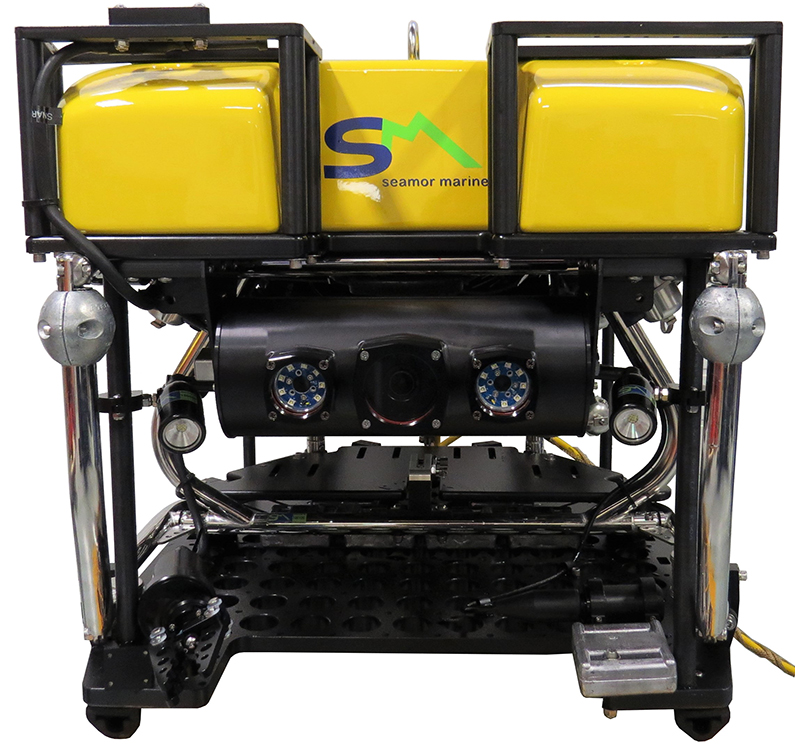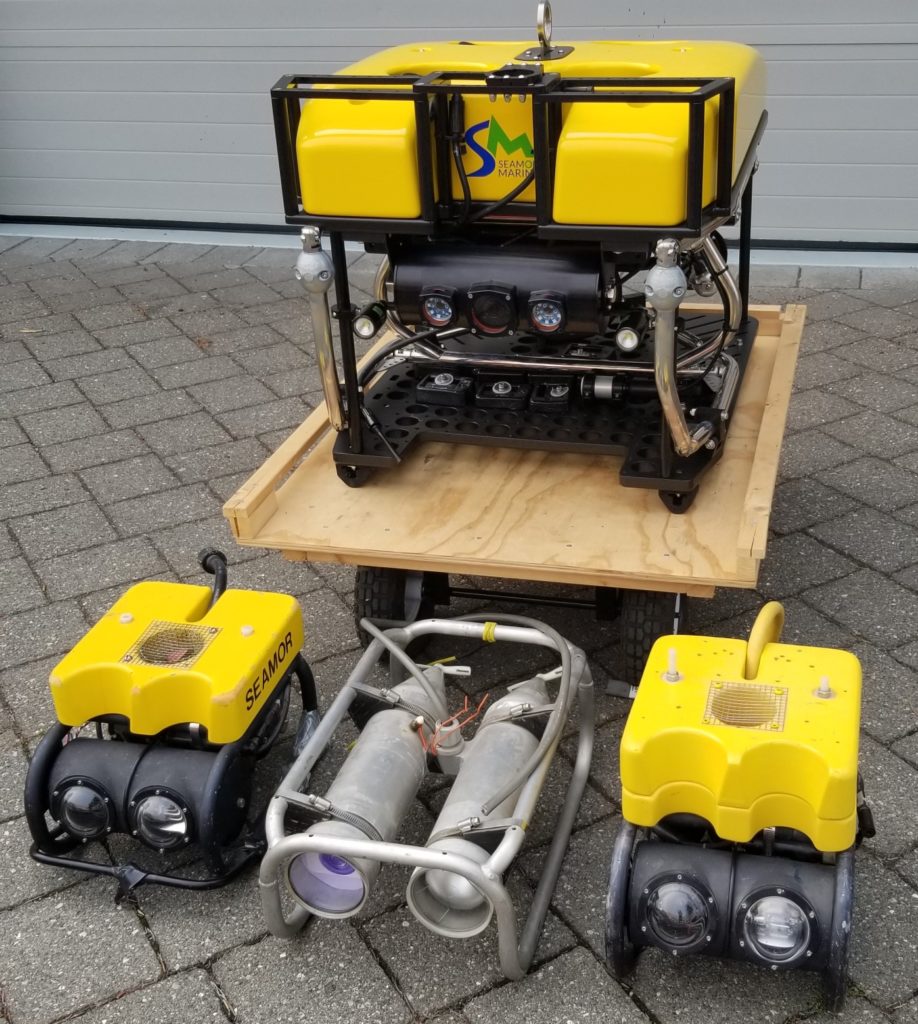When choosing an ROV (remotely operated vehicle), there are a few key factors to consider to ensure that the ROV you select is well-suited for your specific needs. At SEAMOR we make it our priority to fully understand and anticipate your specific needs. This is why we have an in-depth conversation about how we can make the best ROV for you, before you make your purchase. Here are some points to consider to prepare yourself.
- Purpose
- Depth
- Size and Weight
- Power and Endurance
- Payload Capability
- Brand and Support
Purpose
What task(s) will the ROV be used for? Will it be used for research, inspection, maintenance, or something else? In what environment will your use your ROV – shallow water or deep water? Does your ROV need to maneuver in tight spaces? Answering these questions will help narrow down the field of options and ensure that you choose an ROV that is optimized for the job at hand. This could mean choosing our Chinook ROV which is smaller and more agile over our Mako ROV which is larger but can carry more accessories.
Depth
ROVs are designed to operate at specific depths, so you will need to select an ROV that is rated for the maximum depth at which you expect to operate. If you plan to use the ROV in deep water, you will need to choose one with a high depth rating. For example, our standard Chinook is built to dive to 300m (1000ft). However, the deep model can dive down to 600m (2000ft).
Size and Weight
The size and weight of the ROV will determine its mobility and maneuverability. A smaller, lighter model will be more maneuverable, but may not have the same capabilities as a larger, heavier model. The SEAMOR Steelhead is our smallest ROV and is often used for inspection tasks. It can easily be handled by two people. In contrast, the SEAMOR Mako is considerably larger at 72kg (160lbs) on land. But, it can carry a high payload meaning there is more space for additional tools required for special tasks.
Power and Endurance
Consider how long the ROV will need to operate without returning to the surface for recharging or maintenance. It is also important to consider the life-span you would like your ROV to have. High-quality models can be used like work-horses and last you many years, like an older SEAMOR model that survived 8 years at the bottom of a lake. Cheaper models may help you cut some corners now, but there is no quality guarantee which makes them a riskier investment.
Payload Capability
ROVs have a limited amount of space and weight capacity for carrying cameras, lights, and other equipment. Make sure that you choose a payload capability that is sufficient for your needs. The payload needs to be balanced out by enough thrusters, buoyant material and a durable frame. It is best to think about your ROV as the “underwater pickup truck” that will get your tools to the job and back up to safety. If it isn’t balanced correctly, you run the risk of losing more than your ROV to the deep.

Brand and Support
Consider the quality of the ROV and the level of customer support you can expect from the manufacturer. Look for ROVs made by reputable companies with a good track record and read customer reviews before making your decision. Check out our case studies for more information.
At SEAMOR we can proudly say that we excel at delivering both high quality ROVs and great customer support. We care about your job. Our mission is to equip the world with the most innovative underwater technology so underwater explorers and scientists can work safely and productively. To make this happen we are committed to being available, easy to reach and solution oriented.
Shiny-New-Thing Trap
Try to avoid spending money on the newest and shiniest technology. We regularly come across cameras with 4k, or even 8k resolution now. However, the working conditions of your ROV might not easily cater towards those newest specs. HD cameras, for example, can get the job done just as well, if not better, under certain environmental conditions. This is because there is no lag in data transfer and your ROV can send up smooth video in real-time. The cameras are just one example. Generally, the environment your ROV will be working in plays a big role in how effective impressive specs are. So, before you buy anything, talk to the manufacturer and discuss all available options. Together with SEAMOR, we will get you the best ROV and accessories to get the job(s) done.
Conclusion
Once you have considered all of these factors, you should have a better idea of what you are looking for.The next step is to speak with a manufacturer’s representative or a dealer to get more information and advice on which ROV would be the best fit for your application. Get in touch with SEAMOR directly or visit one of our dealerships around the world to talk about SEAMOR ROVs.

